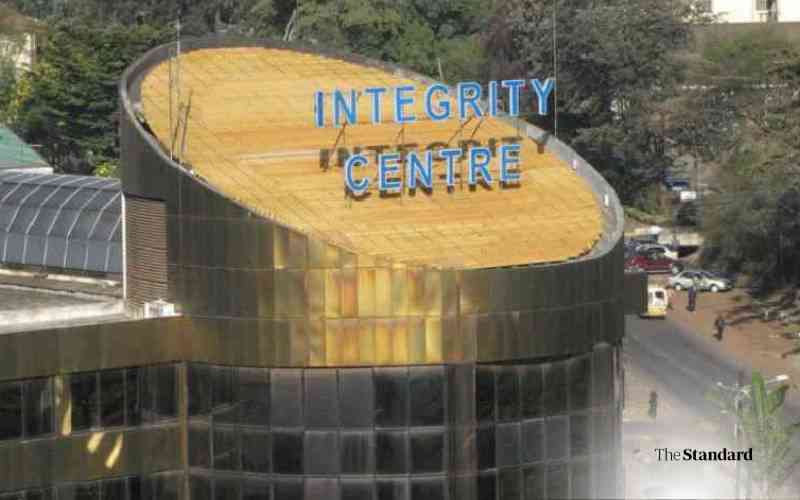
Integrity Centre hosts the Ethics and Anti-Corruption Commission offices in Nairobi. [File, Standard]
The Ethics and Anti-Corruption Commission (EACC) is now focusing on youth as a vital resource in the fight against corruption.
With 75 per cent of the population under age 35, the EACC views Generation Z as a transformative force for ethical governance in both public and private sectors.
At a workshop held at Kitale National Polytechnic in Trans Nzoia County, EACC North Rift Regional Manager Charles Rasugu emphasised their strategy to empower young people with knowledge, skills, and values.
"If we empower them with the right attitude and information, they will not only avoid corruption but actively combat it," he stated.
The workshop gathered 80 youth leaders, aiming to enhance their understanding of ethical governance.
Rasugu expressed concern over the vulnerability of youth to corrupt systems, especially in employment. “We tell them that using fake credentials will ultimately lead to legal consequences,” he said.
Rasugu highlighted the importance of preventing corruption before it occurs, advocating for an anti-corruption culture among youth.
"Our vision is integrity and good governance driven by informed citizens," he added.
Participants like Clara Ruto and Dennis Karadini reflected on the workshop as a wake-up call.
Ruto noted that empowering youth is key to tackling corruption, while Karadini plans to establish integrity clubs in high schools to instill values of honesty early on.
Collins Mukhwana emphasised the need for active involvement rather than just online activism.
"Real action starts in our communities. I feel responsible to educate my peers and hold leaders accountable,” he said.
Rasugu painted a stark picture of corruption effects in critical areas such as education and healthcare.
He remarked on the embezzlement of bursary funds and how such corruption deprives young people of educational opportunities, ultimately impacting national productivity.
Stay informed. Subscribe to our newsletter







